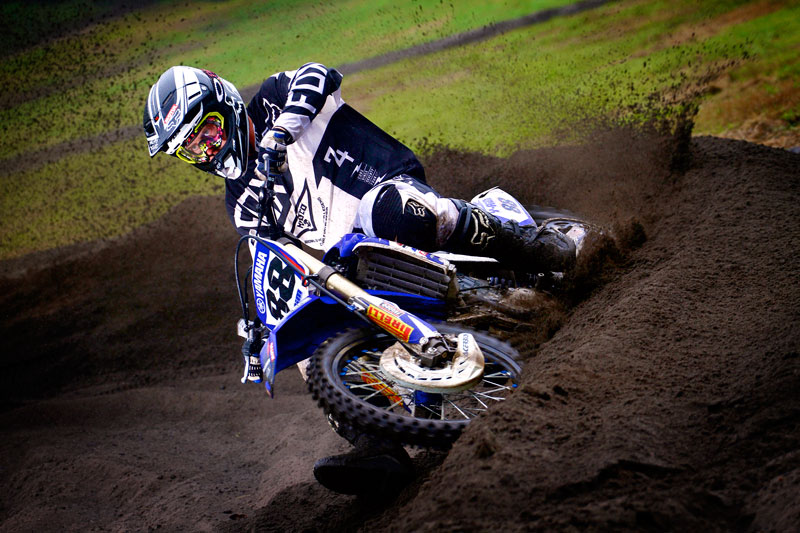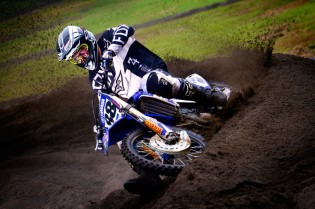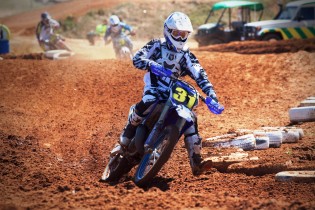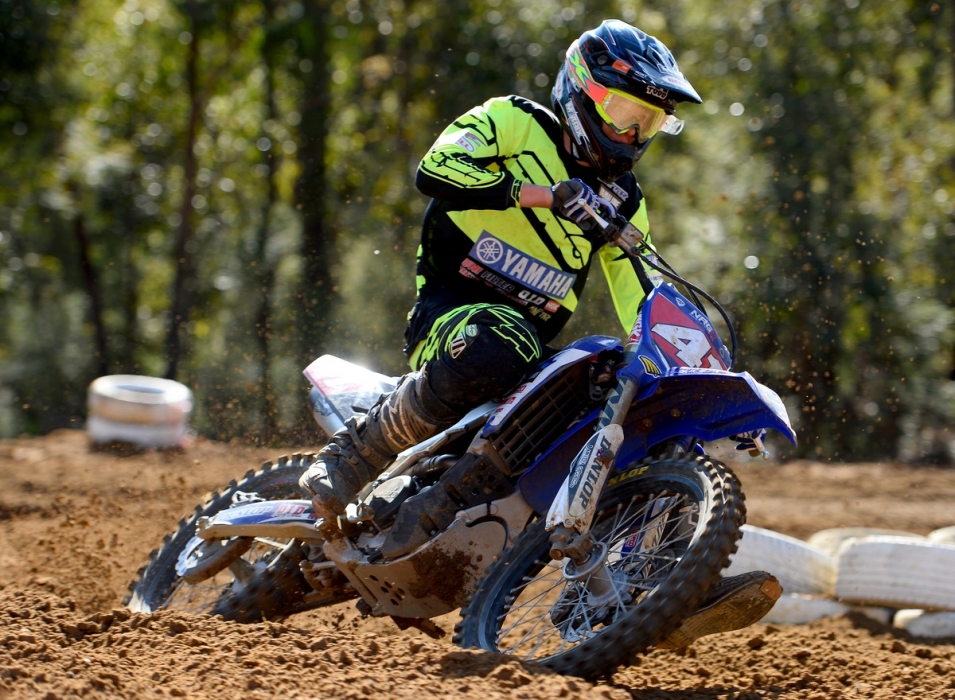
Riding sand can be tough. Sand makes your bike feel like it has half the horsepower it should; it gets rough and at times it seems bottomless. Get it right, though, and you’ll love it.
STORY BY SHANE BOOTH | PHOTOGRAPHY MATT BERNARD
MOMENTUM IS KEY
You need to keep moving forward in sand — it’s almost as simple as that. While the bike is driving forward, the weight is transferred rearward, keeping the front light and on top of the sand. The second forward momentum is halted, the weight of the rider and bike transfers forward, burying the front wheel into the soft surface until it tucks and sends you over the handlebars. The goal is to try and have some sort of throttle applied for basically the whole track. The smallest amount of throttle will keep the bike driving forward; it may only be five per cent but that’s much better than none. You will find that washing speed off earlier than usual before turns and then driving the bike into and through the corner with throttle will work well. Try to keep the bike in a meaty part of the power rather than revving it too hard — it will produce more tractable power that way, which also helps.
BRAKING
If we just talked about how important it is to maintain momentum in the sand, you may be thinking, “How do I slow down, then?” Well, it’s a good question and you do need to treat it a little differently from braking on hard-pack. You need to slow down a little more gradually in the sand so you don’t have a massive transfer of weight onto the front wheel, which will send you for a quick trip over the bars. Your rear brake will be much more effective in the sand than usual, too, and when used will actually help pull the rear of the bike down. The braking zone usually gets very rough in the sand and you’ll find yourself dealing with big braking bumps all the way through your corner entry. The best way to deal with this is to wash a little speed off before the bumps start then drive the bike through the bumps and into the corner with throttle. Doing this will keep the front wheel light and stop it from burying in one of the holes. Anytime you’re braking in the sand, it’s also a good idea to use a technique called trailing throttle. This is where you actually keep a small amount of throttle applied even while you’re braking — it just helps avoid loading up the front wheel with too much weight.
TYRE SELECTION
Selecting the correct tyre for the conditions is always important and riding in the sand is no different. A good sand tyre used on a sand track can mean a difference of a couple of seconds per lap. A hard-pack tyre won’t cut it at all; the knobs are too short and close together to effectively dig in and get drive on the soft surface. The front tyre needs to be able to get hold of the sand, too, so you can steer the bike through and out of your turns. Specific sand tyres will have rows of knobs that have big gaps between them and even a tapered backside of each knob so it doesn’t drag as aggressively under brakes.
BIKE SETUP
This unique surface also generates a unique style of track. The way bumps form is very different from a hard-pack track. Fast sections of track will generally end up in massive rolling whoops. Braking bumps can be very deep and choppy while your corners will also develop whoops almost the whole way round. So, considering that it only makes sense that if your bike works well on a hard-pack track it should be horrible in the sand. You don’t need to go out and get your suspension revalved for the sand, though race teams will do just that, but there are a few things you can do that will help. You can go a couple of clicks firmer on the front forks and maybe even slide the forks down through the triple clamps a few millimetres. This will help keep the front of the bike from tucking in turns and make it a little more stable on fast whooped-out straights. Some riders will increase their rear shock sag slightly so the rear of the bike rides lower. Don’t go too far on this, though, as you need the rear end travel so it can absorb the impact into the face of the big whoops. Slowing the rear shock rebound down slightly will help, too, but don’t go too slow or the rear shock won’t reset to full travel before it hits the next whoop.
LINES
Get your flow on! You want to try to stay light in the sand and that all comes down to the lines you choose to ride. Try to open your corners up as much as possible; make the radius as wide as possible so you can keep your momentum up and avoid burying in the sand. Try not to go into corners and square them off — you’ll just lose your momentum and sink into the soft surface. Then, as you get on the gas, the rear wheel will just dig a trench before it starts driving you forward. Higher gears can help you flow your corners, too, so give that a try. Before long you’ll find yourself carrying a little more speed to make the higher gears work, which is great.
BODY POSITION
Where you place your body weight will help in the sand just as it does on any other surface. In the sand you’ll spend plenty of time further back on the bike than usual, helping keep the front light and out of the deep sand. In corners, lean with the angle of the bike and keep your head back slightly; the sand will hold you and, when you get comfortable with it, railing a sandy corner is one of the best things you can do on a bike. Through the bigger whoops you’ll find on straights, you want to work with the bike in a standing position. The goal is to keep the front wheel skipping from top to top of the whoops and avoid dropping the front wheel in between. Leaning back slightly will help here, too.




